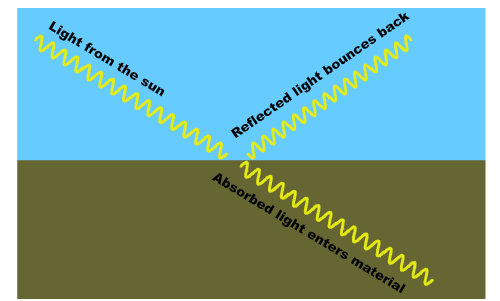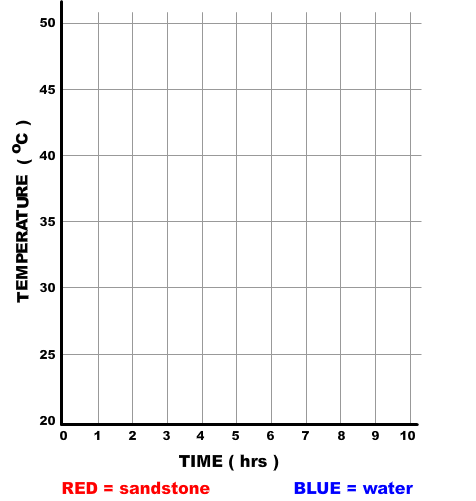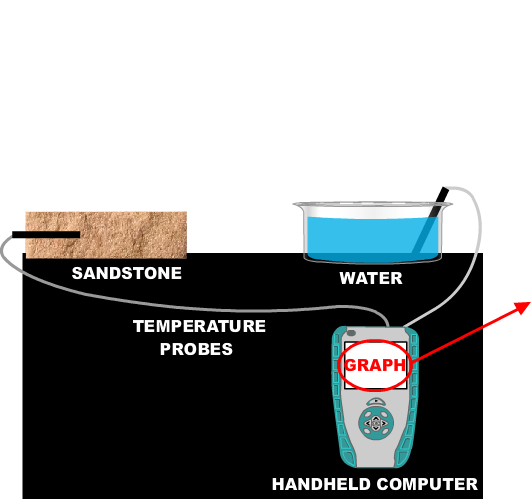


Almost all of the energy on planet Earth comes from the same place: the sun. That energy keeps the planet warm and grows the plants that feed the animals. Without the sun, life would not be possible. Energy that comes from the sun is called solar energy.
When light from the sun hits the Earth some of the energy is absorbed. This makes the temperature of the Earth increase. Some of the light bounces back into space unused. The amount of light that is reflected back into space depends on something called albedo.
Some materials bounce a lot of light off of them. For example, snow. That is why it is so hard to look at snow on a sunny day. The light is bouncing off the snow and into your eyes. We say that snow has a high albedo. This means that most of the light is being reflected unused.
Other materials absorb the light. They pull the solar energy inside themselves. You know this is happening because the temperature of these materials will rise when they are placed in sunlight. A good example of this is water and rocks. We say that these materials have a small albedo. This means that they do not reflect very much light. Instead, they pull the energy inside.
In today's lab we will be studying two materials that both absorb solar energy. The first material is sandstone. The second material is water. In order to understand the different climates on our planet, it is important to understand how stones and water absorb solar energy differently.
LAB DESIGN: (This has already been set up for you below.)
Let's try this ourselves and see what happens! Obviously we will speed up time so that you don't have to sit at your computer for several hours.




QUESTION 1: What happened to the sandstone when you turned on the light?
The temperature slowly increased.
The temperature quickly increased.
The temperature stayed the same.
QUESTION 2: How hot did the sandstone get?
degrees Celsius
QUESTION 3: How much did the temperature of the sandstone INCREASE? ( Take the final temperature of the sandstone and subtract the initial temperature of the sandstone. )
degrees Celsius
QUESTION 4: What happened to the water when you turned on the light?
The temperature slowly increased.
The temperature quickly increased.
The temperature stayed the same.
QUESTION 5: How hot did the water get?
degrees Celsius
QUESTION 6: How much did the temperature of the water INCREASE?
degrees Celsius
Every substance has something called SPECIFIC HEAT. The specific heat tells you how much energy is required to get the temperature to go up. To calculate the specific heat you use the following formula:
Specific Heat = energy ÷ mass ÷ increase in temperature.
We let the lamp shine for four hours. In that time 20.9 kJ of light energy struck our sample.
We were told in the lab design that each sample had a mass of 1 kg
QUESTION 7: Use the formula to calculate the specific heat of sandstone. (Make sure you use the INCREASE in temperature and not the maximum temperature.)
Specific Heat = energy ÷ mass ÷ increase in temperature.
Specific Heat = 20.9 kj ÷ 1 kg ÷ 23 °C = 0.91
kJ / kg °C
Every substance has something called SPECIFIC HEAT. The specific heat tells you how much energy is required to get the temperature to go up. To calculate the specific heat you use the following formula:
Specific Heat = energy ÷ mass ÷ increase in temperature.
We let the lamp shine for four hours. In that time 20.9 kJ of light energy struck our sample.
We were told in the lab design that each sample had a mass of 1 kg
QUESTION 8: Use the formula to calculate the specific heat of water.
Specific Heat = energy ÷ mass ÷ increase in temperature.
Specific Heat = 20.9 kj ÷ 1 kg ÷ 5 °C = 4.18
kJ / kg °C
In our previous calculation we determined that the specific heat of water is a lot bigger than the specific heat of sandstone. This means that water can absorb a lot of energy before it gets hot
QUESTION 9: The specific heat of iron is only 0.44 kJ/kg°C. The specific heat of wood is 2.9 kJ/kg°C. Looking at those numbers, explain why it is better to stir a hot pot of soup using a wooden spoon instead of a metal spoon.
QUESTION 10: If you go to the beach on a hot day it is not unusual for the sand to burn your feet. But if you step into the water your feet cool off quickly. Use what you have learned from the graph to explain why this is so. Why is the sand so hot but the water so cold even though the sun is shining on both of them?
QUESTION 11: The surface of the Earth is more than 70% water. How does this affect our planet?
It makes the planet a lot hotter during the day, because water heats up rapidly in sunlight.
It keeps the planet a lot cooler during the day, because water can absorb solar energy without getting hot.
Water has no influence on world temperatures.
QUESTION 12: What happened to the sandstone when you turned the light off?
The temperature slowly decreased.
The temperature quickly decreased.
The temperature stayed the same.
QUESTION 13: How much time did it take the sandstone to return to room temperature? (Measure from when we turned the lamp off.)
hours
QUESTION 14: At what time did the temperature of the sandstone drop BELOW the temperature of the water?
hours
QUESTION 15: What happened to the water when you turned off the light?
The temperature slowly decreased.
The temperature quickly decreased.
The temperature stayed the same.
QUESTION 16: How much time did it take the water to return to room temperature?
hours
QUESTION 17: Sandstone is made out of sand. Deserts also have a lot of sand. Use what you have learned from the graph to identify which of the following statements is true.
When the sun sets in a desert the temperature stays about the same even though the sun is gone.
When the sun sets in a desert the temperature drops rapidly and it gets quite cold.
When the sun sets in a desert the temperature cools down gradually. It stays warm for a long time after sunset.
Because water releases its heat slowly it acts like a giant "heat storage" device after the sun sets. It slowly releases warmth to the surrounding areas. (This is why people use hot water bottles to keep themselves warm at night. The water stays warm for a long time and it keeps you warm too.)
QUESTION 18: Hawaii is a small island surrounded by water on all sides. Use what you have learned from the graph to identify which of the following statements is true.
When the sun sets in Hawaii the temperature stays exactly the same even though the sun is gone.
When the sun sets in Hawaii the temperature drops rapidly and it gets quite cold.
When the sun sets in Hawaii the temperature cools down gradually. It stays warm for a long time after sunset.
QUESTION 19: The surface of the Earth is more than 70% water. How does this affect our planet?
It makes the planet a lot colder at night, because water absorbs all the energy.
It keeps the planet a lot warmer at night, because the water slowly releases the heat it built up during the day.
Water has no influence on world temperatures.
Winds usually blow from COLD places TOWARDS HOT places. Use what you learned from the graph to answer the following questions.
QUESTION 20: If you live near a large lake or the ocean, which direction will the wind blow DURING THE DAY?
It will blow from the land towards the water.
It will blow from the water towards the land.
It will blow parallel to the coast.
Winds usually blow from COLD places TOWARDS HOT places. Use what you learned from the graph to answer the following questions.
QUESTION 21: If you live near a large lake or the ocean, which direction will the wind blow AT NIGHT?
It will blow from the land towards the water.
It will blow from the water towards the land.
It will blow parallel to the coast.
QUESTION 22: Using what you learned in this lab, explain how water helps to keep our planet alive. (HINT: It has nothing to do with drinking it.)